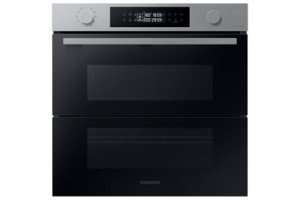The Rise of Built-in Ovens: Enhancing Modern Kitchens
In the ever-evolving world of home improvement, built-in ovens have become a staple in contemporary kitchen style. These appliances not just offer a smooth and smooth aesthetic but also contribute considerably to the performance and performance of home cooking. This article delves into the various elements of built-in ovens, including their advantages, types, setup considerations, and upkeep, together with frequently asked concerns to provide an extensive overview.
What is a Built-in Oven?
A built-in oven is an appliance developed to be installed into kitchen cabinets, providing it a structured appearance and maximizing counter space. Unlike standard freestanding ovens, which stand alone and are frequently bulky, built-in ovens fit flush with cabinets for a more integrated appearance. They are offered in various sizes, designs, and functions, dealing with a large range of cooking needs and kitchen styles.
Benefits of Built-in Ovens
Built-in ovens featured various advantages that make them appealing to property owners. Below are some of the crucial advantages:
- Space Efficiency: Built-in ovens save counter space while enhancing kitchen designs.
- Adjustable Design: They can be integrated into cabinets, allowing house owners to tailor looks according to individual taste.
- Improved Performance: Many built-in ovens come geared up with sophisticated cooking technologies, permitting much better heat circulation and faster cooking times.
- Availability: Their setup at eye level makes it simpler to examine food without flexing down, providing greater benefit and safety.
- Resale Value: A contemporary, properly designed kitchen can boost property value, making built-in ovens a financial investment worth considering.
Kinds Of Built-in Ovens
Built-in ovens can be classified based on their style and function. The following list details the typical types of built-in ovens available on the market:
- Single Ovens: A basic design that features one cooking compartment.
- Double Ovens: These come with 2 different compartments, which enable cooking numerous dishes at various temperatures.
- Wall Ovens: Installed into the wall for a space-saving option, these ovens offer convenience and ease of access and can be either single or double.
- Steam Ovens: These utilize steam for damp cooking and are frequently favored for much healthier meal preparation.
- Convection Ovens: Designed with a fan that flows hot air, guaranteeing even cooking and browning.
| Type | Description | Perfect For |
|---|---|---|
| Single Oven | One cooking compartment for basic baking and roasting. | Little households and cooking areas. |
| Double Oven | Two compartments for simultaneous cooking of different dishes. | Large families with diverse menus. |
| Wall Oven | Built into the wall for easy access. | Space-conscious kitchen areas. |
| Steam Oven | Cooks using steam for healthier options. | Health-conscious people. |
| Convection Oven | Flows hot air for even cooking and faster outcomes. | Baking lovers and chefs. |
Installation Considerations
Choosing to set up a built-in oven includes several considerations to ensure that it fits effortlessly within the kitchen. Important aspects consist of:
- Cabinet Dimensions: Accurate measurement of the cabinet space needed for the oven is crucial for a correct fit.
- Power Supply: Built-in ovens usually need a devoted power supply; consulting a licensed electrical expert might be needed.
- Ventilation: Ensure that the oven's ventilation requirements are met to promote safe operation.
- Regional Building Codes: Compliance with local codes is necessary when installing any kitchen home appliance.
It's strongly recommended that setup be carried out by professionals to ensure security and adherence to producer specs.
Upkeep of Built-in Ovens
Maintaining built-in ovens is vital to guarantee their durability and operation. Below are some suggestions for efficient upkeep:
- Regular Cleaning: Wipe down surface areas after each use to prevent build-up; consider self-cleaning choices if available.
- Examine Seals: Inspect the oven door seals routinely for wear and tear to keep efficiency and avoid heat loss.
- Adjust Temperature: Occasionally check and adjust oven temperature level settings if cooking results are irregular.
- Professional Servicing: Schedule routine upkeep with certified technicians for electrical components and deeper cleansing.
Often Asked Questions (FAQs)
Q1: How do I select the ideal size built-in oven for my kitchen?
A1: Measure the available cabinet area and think about the cooking routines of your household. Single or double ovens prevail choices based on meal preparation requirements.
Q2: Are built-in ovens more energy-efficient than freestanding ones?
A2: Built-in ovens can be more energy-efficient due to much better insulation and advanced cooking innovation; however, real efficiency depends on the specific model and use.
Q3: Can built-in ovens be installed throughout the kitchen?
A3: Built-in ovens need specific cabinets and may need a devoted power source, so preparing their placement carefully within the kitchen layout is necessary.
Q4: What kind of upkeep do built-in ovens need?
A4: Regular cleansing, examining door seals, adjusting temperature levels, and expert maintenance as needed are all elements of proper maintenance.
Built-in ovens are an exceptional addition to modern-day kitchens, using both visual and useful benefits. Their space-saving design, personalized alternatives, and advanced features accommodate diverse cooking needs. When considering Built In oven and hob packages with installation built-in oven, house owners need to take into account their particular culinary preferences, kitchen layout, and upkeep capabilities. By doing so, they would be making a valuable investment in their home, increasing both performance and style.

